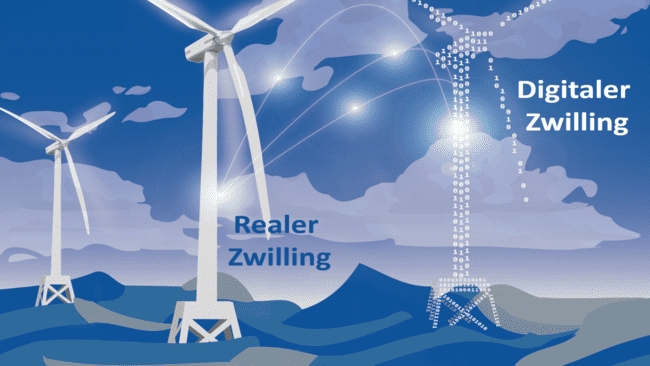Collaborative Research Center 1463 Offshore Megastructures
Project title: Collaborative Research Center (SFB) 1463 – “Integrated design and operation methodology for offshore megastructures”.
Motivation:
The European Commission unveiled its European Green Deal at the end of 2019 to make Europe the first climate-neutral continent by 2050. The success of this ambitious goal depends on the expansion of offshore wind energy in the North Sea. The plan is for offshore wind energy to account for the largest share of electricity production in Europe, at over 20%, by 2050.
Over the past three decades, wind turbine (WTG) size growth has been nearly unabated, as larger turbines are associated with more efficient power generation and more continuous power feeds, as well as a smaller footprint. In terms of output, large-scale plants have shorter installation times and logistics and grid connection are less expensive and time-consuming. In addition, the maintenance of a few large plants is more efficient and economical than for a large number of smaller plants. These advantages make large-scale plants particularly valuable for the success of the energy transition and also for investors.
Research Program:
Key research questions for offshore megastructures result from new and changing impact and use scenarios over the lifetime, for example as a result of new blade types and control concepts. Other causes of variable impacts over the lifetime are subsequent repowering or retrofitting measures as well as changing environmental impacts (increasingly extreme weather events and resulting, previously unconsidered impacts on supporting structures). A strong and so far insufficiently studied influence on the dynamic behavior of the structure is exerted by the discontinuous degradation of the structure, changes in the soil, new control concepts (e.g., performance- or lifetime-optimized plant control), and adaptive components of the structure (e.g. B. (semi-) active damping systems). Compared to conventional structures, installation, operation and dismantling concepts are of greater importance for megastructures and have a significant influence on their economic feasibility.
Scientific issues:
- Future very large WTGs are exposed to hardly known impacts and impact combinations. Examples include wind conditions in the Ekman layer and in the transition from the Prandtl to the Ekman layer, aeroelasticity on increasingly flexible very large rotor blades, and hydrodynamic effects and scour effects on novel foundation structures.
- The rapidly growing load-bearing structures and system components exhibit extremely complex load-bearing and deformation behavior, which requires new holistic modeling approaches to describe them as an interacting system. For this purpose, on the one hand, nonlinear coupled overall models are indispensable, which, for example, can also precisely represent geometric nonlinearities, which become relevant in the case of the expected large deformations of ultra-slim rotor blades. On the other hand, these overall models should be capable of near real-time operation to enable predictive capability during operation as well as model-based control and structural monitoring, and to be able to test a large number of design variants in an economical time frame.
- The exposed location and the large dimensions and masses of structural and plant components lead to an increasing importance of coordinated installation, operation and maintenance concepts, which are ideally already considered in the design. This requires a mathematically describable methodology for an integrated design process that takes into account relevant life phases such as manufacturing, installation, operation and deconstruction in the initial structural design in relevant detail.
- Due to the high planning and economic risk as well as the high investment and maintenance costs of offshore megastructures, special requirements are placed on the forecasting capability of the models. Prediction models for changing environmental conditions and control concepts as well as predictive maintenance concepts are becoming existential for safe and economical operation. For this purpose, both physically motivated models for the realistic description of variable design boundary conditions and a coupled overall model for virtual planning, testing and verification of new operating concepts and loading scenarios are to be researched.
- New structural concepts in offshore megastructures require the use of new materials. Furthermore, discontinuous degradation effects of the structure and, for certain materials (e.g., fiber composites), continuous degradation effects play an increased role with respect to the dynamic behavior of WTGs, so new material models may be required. As previously explained, these are deliberately not to be addressed in the first funding period of the planned Collaborative Research Center, since corresponding new structural concepts are only to be a result of the first funding period. Thus, the initial focus will be on the development of design and operational methods.
Project type: Collaborative Research Center
Term:
Funding: DFG funding
Research Partners:
Contact:
University of Hanover
SFB 1463 Integrated Design and Operation Methodology for Offshore Megastructures
at the Institute for Statics and Dynamics (ISD)
Greta Hauptmann (Management)
Appelstr. 9a
D-30167 Hanover
Tel: +49 (0)511 / 762-17213
Fax: +49 (0)511 / 762-2236
Email: g.hauptmann@isd.uni-hannover.de

More information
Collaborative Research Center 1463 on GEPRIS (with information on the subprojects)
